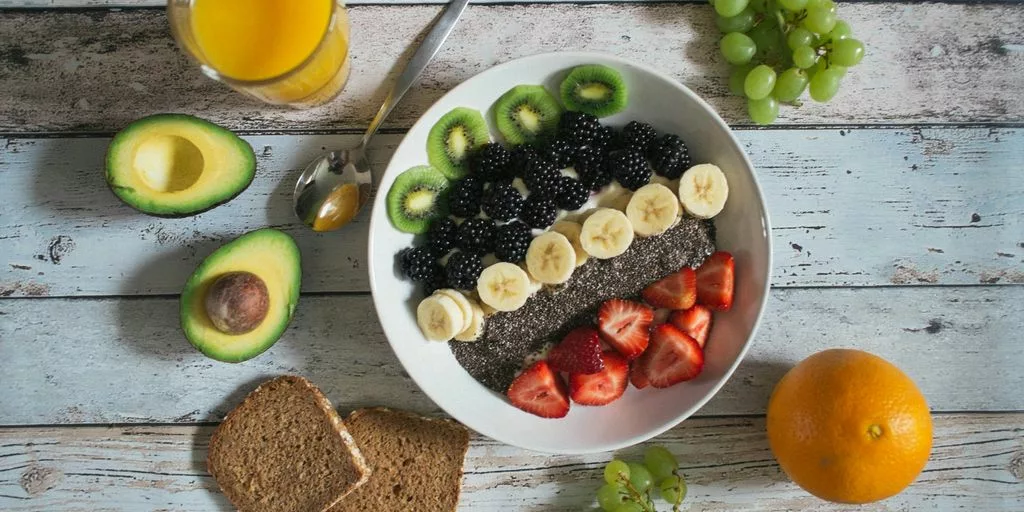
Nourishing Your Body with Balanced Nutrition
A healthy diet is the cornerstone of well-being. The food you eat provides the nutrients and energy needed to fuel your body and mind. Focus on a diet rich in whole foods like fruits, vegetables, whole grains, and lean proteins. Limit processed foods, added sugars, and unhealthy fats.
The Power of Regular Physical Activity
Finding the Right Exercise Routine for You
Discovering the perfect exercise routine can be a game-changer for your health. Regular physical activity supports your immune system, reduces chronic inflammation, and balances hormones, which all help reduce cancer risk. Start by exploring different types of exercises to find what you enjoy most. Whether it’s running, swimming, or yoga, consistency is key.
The Benefits of Strength Training
Strength training isn’t just for bodybuilders. It plays a crucial role in maintaining muscle strength and function, which is essential as we age. People who do regular physical activity have a lower risk of type 2 diabetes and other chronic diseases. Incorporate weight lifting or resistance exercises into your routine to build and maintain muscle mass.
Incorporating Flexibility and Balance Exercises
Flexibility and balance exercises are often overlooked but are vital for overall health. These exercises help prevent injuries and improve posture. Embrace the power of movement by adding activities like stretching, Pilates, or tai chi to your fitness regimen. These practices not only enhance physical health but also support mental well-being by reducing stress and anxiety.
Embrace the power of movement: how physical activity enhances health. Enhance cardiovascular health, maintain muscle strength, and function, and support mental health by reducing stress and anxiety.
Mental Well-being and Stress Management
Achieving holistic wellness through mindfulness, sleep, and community support is essential for a balanced life. Embrace a balanced lifestyle integrating physical, mental, and emotional health for overall well-being.
Mindfulness and Meditation Practices
Mindfulness and meditation are powerful tools for managing stress and enhancing mental clarity. By incorporating these practices into your daily routine, you can cultivate a sense of inner peace and emotional stability. Start with just a few minutes each day and gradually increase the duration as you become more comfortable.
The Importance of Sleep for Mental Health
Quality sleep is crucial for maintaining mental health and emotional balance. Establish a consistent sleep schedule, create a restful environment, and avoid screens before bedtime to improve your sleep quality. Prioritizing sleep can significantly impact your overall well-being.
Techniques for Managing Daily Stress
Managing daily stress involves finding balance in your day-to-day life. Techniques such as prioritizing tasks, practicing mindfulness, setting realistic goals, and establishing work-life boundaries can help reduce stress levels. Remember, small changes can make a big difference in achieving a balanced life.
Building Strong Social Connections
Our social well-being thrives on meaningful connections with others. By nurturing these relationships and fostering a supportive social network, we can significantly enhance our overall well-being.
The Role of Community in Wellness
Communities provide a sense of belonging and support. Engaging in community activities, such as local clubs or volunteer work, can help you build a strong social network. Offer help proactively: when opportunities arise, such as answering a question in an online forum or helping a colleague meet a deadline, offer your assistance. This not only strengthens your connections but also boosts your own happiness.
Nurturing Relationships with Family and Friends
Strong relationships with family and friends are essential for a balanced life. Regularly spend quality time with loved ones, whether it’s through shared meals, outings, or simple conversations. Remember, it’s the small, consistent efforts that build lasting bonds.
Social connections and positive relationships are an essential part of achieving a healthy and balanced life. Humans are social beings, and we thrive on social interactions, love, support, and companionship.
The Impact of Social Media on Mental Health
While social media can be a great tool for staying connected, it’s important to use it mindfully. Excessive use can lead to feelings of isolation and anxiety. Set boundaries for your social media use and focus on engaging in meaningful interactions rather than passive scrolling. Balance your online interactions with face-to-face connections to maintain a healthy social life.
Creating a Restorative Sleep Environment
The Science of Sleep Cycles
Understanding your circadian rhythm is crucial for achieving restorative sleep. This internal clock regulates your sleep-wake cycle, helping you feel alert during the day and sleepy at night. Respecting this rhythm can significantly improve your sleep quality.
Tips for Improving Sleep Quality
- Establish a Bedtime Routine: Engage in relaxing activities like reading, taking a warm bath, or practicing deep breathing exercises before bed.
- Create a Sleep-Friendly Environment: Keep your bedroom cool, dark, and quiet. Invest in a comfortable mattress and pillows.
- Limit Screen Time: Reduce exposure to blue light from screens at least an hour before bedtime.
- Stay Consistent: Go to bed and wake up at the same time every day, even on weekends.
Master the moonlight glow: ultimate guide to a night routine. Prioritize sleep quality, stress management, and balanced nutrition for a healthier, more balanced life under the moon’s glow.
The Role of Technology in Sleep Hygiene
While technology can be a sleep disruptor, it can also be a helpful tool. Use apps that promote relaxation or white noise machines to create a serene sleep environment. However, be mindful of screen time and opt for settings that reduce blue light exposure.
Integrating Relaxation and Hobbies into Daily Life

Incorporating relaxation and hobbies into your daily routine is essential for maintaining a balanced life. Engaging in hobbies is vital for mental and physical health. Whether it’s reading a book, painting, or gardening, these activities provide a much-needed break from the daily grind and offer a creative outlet for self-expression.
By incorporating hobbies, journaling, and relaxation techniques into your daily routine, you can enhance your well-being and resilience.
The Benefits of Creative Outlets
Creative outlets like painting, writing, or playing a musical instrument can significantly reduce stress levels. They allow you to process emotions and experiences in a healthy way, contributing to overall mental well-being. The key is to find activities that align with your interests and bring you a sense of satisfaction.
Incorporating Relaxation Techniques
Practicing regular self-care and relaxation techniques is essential for managing stress and maintaining mental health. Techniques such as deep breathing exercises, progressive muscle relaxation, or visualization can be easily integrated into your daily routine. These practices not only help in reducing stress but also improve your focus and productivity.
Balancing Work and Leisure Effectively
Finding a routine that works for you, that encourages you to process the day and relax, can be highly beneficial in the long run. You may find yourself managing stress a little easier because of the new outlook that you have achieved. Here are some tips to balance work and leisure effectively:
- Set clear boundaries between work and personal time.
- Schedule regular breaks throughout your day.
- Make time for activities that you enjoy and that help you relax.
- Prioritize tasks to avoid feeling overwhelmed.
Remember, self-care is not a luxury but a necessity for a happier life.
Sustainable Lifestyle Choices for Long-term Wellness
Creating a sustainable lifestyle is essential for long-term wellness. By making eco-friendly choices and prioritizing our health, we can cultivate daily habits that promote longevity and overall well-being. Discover the power of personal wellness by integrating these practices into your life.
Conclusion
In conclusion, achieving a balanced and healthy lifestyle is a continuous journey that requires dedication and mindful choices. This guide has provided you with a comprehensive roadmap to navigate the complexities of wellness, from nutrition and exercise to mental well-being and social connections. By integrating these evidence-based tips into your daily routine, you can foster a more vibrant, energetic, and fulfilling life. Remember, the path to wellness is not about perfection but about making consistent, positive changes that enhance your overall well-being. Start today, and take the first step towards a healthier, more balanced life.
Frequently Asked Questions
What are macronutrients and micronutrients?
Macronutrients are nutrients that our bodies need in large amounts, such as carbohydrates, proteins, and fats. Micronutrients, on the other hand, are needed in smaller amounts and include vitamins and minerals.
How can I incorporate superfoods into my diet?
You can incorporate superfoods into your diet by adding them to your meals and snacks. For example, you can add berries to your breakfast cereal, include leafy greens in your salads, or blend chia seeds into your smoothies.
What are the benefits of strength training?
Strength training helps build muscle mass, improve bone density, boost metabolism, and enhance overall physical strength. It also aids in weight management and can improve mental health by reducing symptoms of anxiety and depression.
How does mindfulness help with stress management?
Mindfulness helps with stress management by encouraging a state of awareness and presence in the moment. This practice can reduce stress, improve emotional regulation, and enhance overall mental well-being.
What are some tips for improving sleep quality?
To improve sleep quality, establish a regular sleep schedule, create a restful environment, limit exposure to screens before bedtime, and practice relaxation techniques such as deep breathing or meditation.
How can I balance work, family, and personal time effectively?
Balancing work, family, and personal time requires setting priorities, creating a schedule, and setting boundaries. It’s important to allocate time for each aspect of your life and to communicate your needs with your employer and family members.







1 thought on “The Ultimate Guide to Wellness: Tips for a Balanced Life”
Comments are closed.